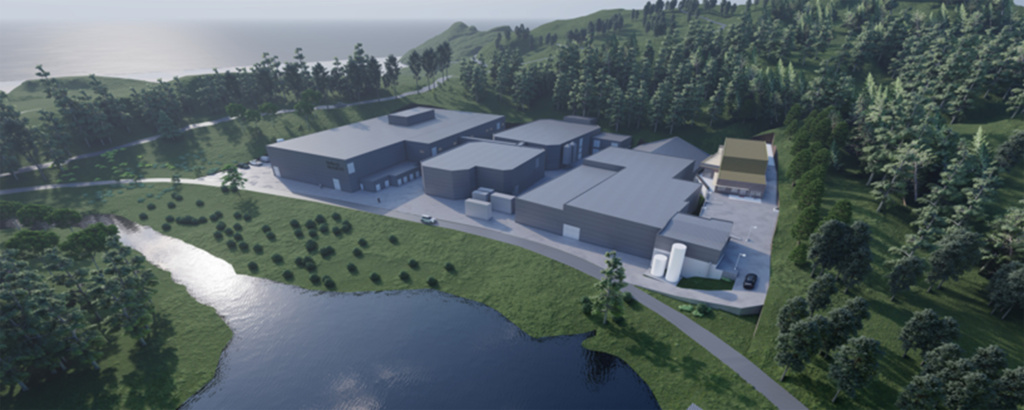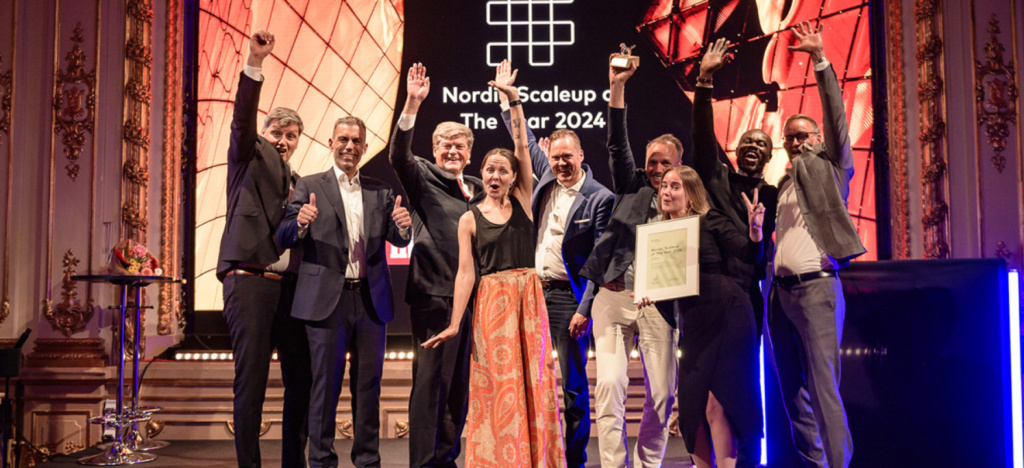Several suppliers to the aquaculture industry are noticing that various unexpected factors have increased investment risk and put a sudden brake on the purchase of green technology. Nofitech, a well-known Norwegian supplier of module-based automated RAS systems, go against the grain and intensify their work on sustainability – both internally in the company and for their customers.
Investment in green technology for increased profitability
– Sustainability means achieving more with less use of resources; it is a strategy to differentiate ourselves from the rest of the market and win the competition internationally. Investing in sustainability is the most important thing you can do when margins are eaten up by unexpected factors, says Robert Hundstad, CEO of Nofitech.
The company has for several years delivered highly digitalized RAS facilities. They are now increasing their collaboration with Schneider Electric, a leader within energy management and industrial automation. Schneider now become both a supplier of digital automation systems for resource and energy efficiency and a collaboration partner on sustainability.
Improving operational efficiency
Together with Schneider Electric, Nofitech has in 2023 developed a delivery and logistics strategy that gives the company lower expenses in the form of standardization and modular thinking. Together, the two players have optimized the number of component variants, without compromising the solutions. On the contrary, it increases efficiency:
– The new strategy provides reduced risk in the form of lower packaging and transport costs, a reduced number of spare parts and less need for storage space. In addition, together with Schneider Electric, we have a plan for competence building in both hardware and software. The aim is to rationalize our programming work, shorten the commissioning time and offer end customers even more energy-efficient solutions, explains Robert Hundstad.
New, innovative solutions for customers
In recent years, Nofitech has delivered large projects both in Norway, Scotland, and the Faroe Islands. Their investment in energy- and resource-efficient solutions has led to several new business opportunities in 2023, both in Norway and internationally, including Japan:
– Making fish-farming facilities more sustainable is a work that takes place all the time. At a facility in the Faroe Islands, we are now delivering for the first time a solution involving heat recovering from blowers and compressors. It will be reused for tempering the process water in the fish tanks, says Hundstad.
– Quite well known in the market is also our system for analysis and prediction MIME, named after the wisest Norse god Mime. The system collects, monitors and processes historical facility data and make predictions about how the facility will performs in term of water quality. It also gives the operators advice and support to maximize production growth, reduce environmental footprint, and minimize risks. In addition, it enables the empowerment of employees on the floor. They are given the opportunity to make important decisions quickly, with a real-time updated and thorough factual basis, points out Hundstad.
A competitive advantage
– Norwegian fish-farmers who invest in digital technology gain a competitive advantage internationally. We notice that modern solutions for energy measurement and monitoring have become more and more in demand by end customers, especially after the increase in electricity prices. They make operators aware of energy consumption and are the reference point for any energy efficiency initiative. Land-based water-recycling aquaculture facilities benefit a lot from such technology. It also ensures a reduction in operating costs through condition-based, predictive maintenance, adds Hundstad.
More to gain with digital competence building
– Nofitech is a skilled partner that we ourselves learn from. We know that a closer dialogue with our support apparatus about better utilization of variable speed drives and PLCs will elicit new solutions that can make both Nofitech and the aquaculture industry more operationally efficient, says John Hjelset, Project Manager within aquaculture at Schneider Electric.
– The aquaculture industry has more to do. Very few players have adopted the most advanced software for energy monitoring and analysis. This provides opportunities to save even more energy. Resource efficiency through digitization is something we have used even internally at Schneider Electric for almost 20 years. In many offices and factories, we have cut material waste and energy costs and achieved operational efficiencies of up to 25 per cent, concludes John Hjelset.
Facts
These measures contribute to increased operating efficiency in aquaculture facilities:
- Nofitech’ s post smolt modules have an energy consumption of less than 4kWh per kilogram of fish produced. This is well below the average for the industry.
- Energy monitoring of the equipment makes continuous improvement possible. The motors are monitored both with regard to power consumption and quality. Condition monitoring reduces maintenance costs.
- Frequency converters control most of the motors in Nofitech’ s facilities. Smart drives are particularly suitable for optimizing power consumption in pump applications and reduce mechanical stress.
- Nofitech bets on the best industrial solutions for operational security by, among other things, using redundant controllers and a strong focus on cyber security.
- The components used in the modules have been chosen with the costs of transport, storage, and maintenance in mind. Nofitech minimizes the range of models (e.g., variable speed drives) whenever possible to achieve lower costs for spare parts, transport, and packaging.
- Efficient use of land results in a smaller footprint. The compact solution for Nofitech’ s facility helps to reduce both power consumption and the impact on the environment.
- Through online water analysis, based on constant monitoring of oxygen content, pH value and redox potential, the fish farmers get a good overview of the water quality. It ensures a good environment for the fish.
- Heat recovery: Up to 80% of life cycle costs are energy costs. With heat recovery, these costs can be reduced considerably. Up to 96% of the compressor’s waste heat can be used as hot air, for example for heating rooms or processes. With a heat exchanger, the hot exhaust air can be used to heat water to 70 °C or higher. This way you get up to 76% of the energy back. The hot water can be used in the production process, in the heating system or for hot water preparation.
- Although wastewater is minimized in RAS facilities, discharge of nitrogen-rich water can lead to unwanted eutrophication of the environment into which the water is discharged. Some countries regulate the discharge of nitrogen from land-based aquaculture. Nofitech participates in the WASTELESS research project in collaboration with SINTEF, NTNU and Hardingsmolt. It involves establishing biomass production using known ecological principles to optimize the removal of nutrients and purify the RAS water. This is done with a mixture of organisms that have valuable properties in fish feed. The produced biomass paste is refined into pure fractions of proteins and fatty acids. This is how new ingredients for fish feed are produced. They can, for example, replace less sustainable feed ingredients, such as soy or fish oil.



